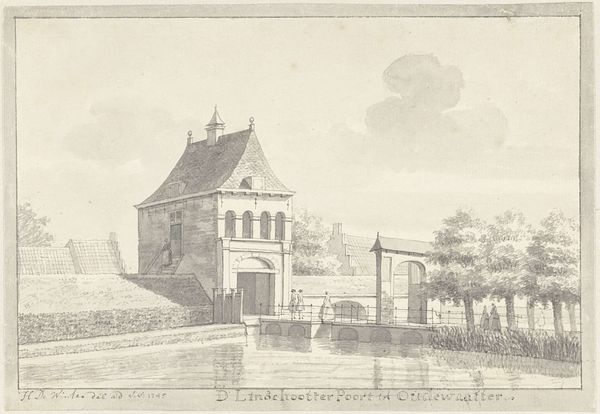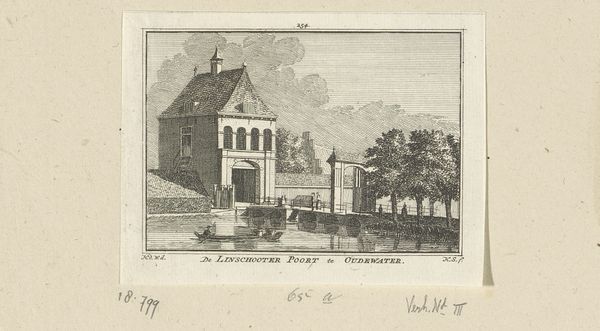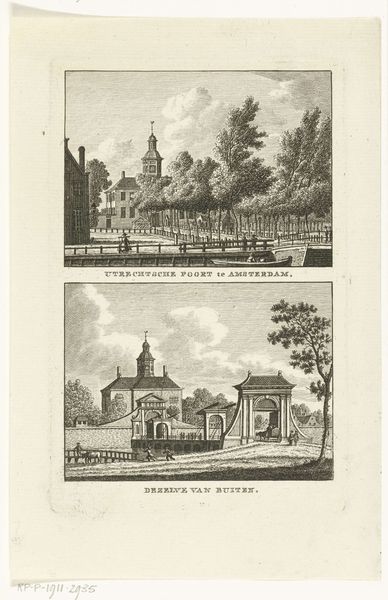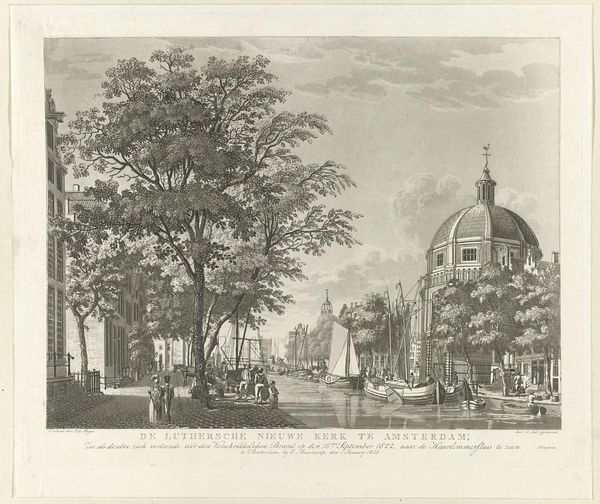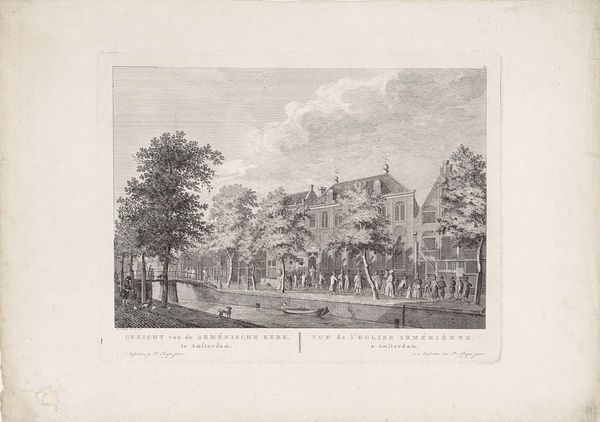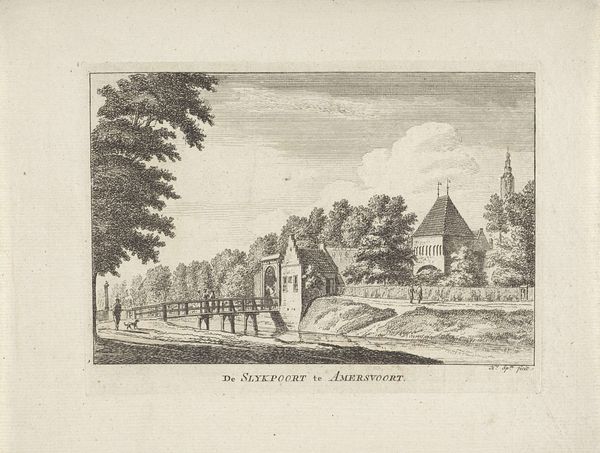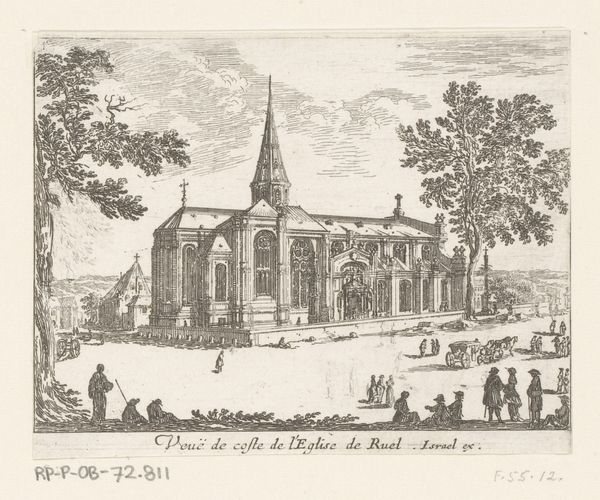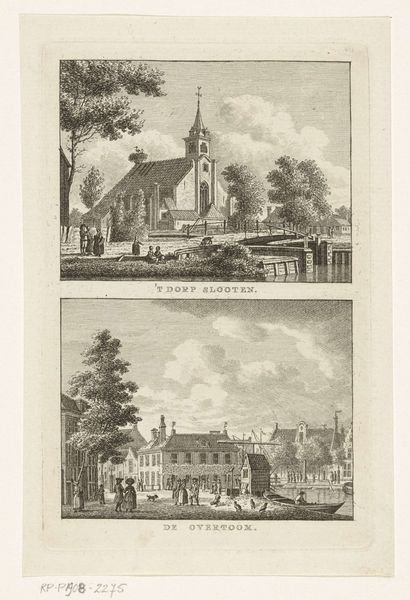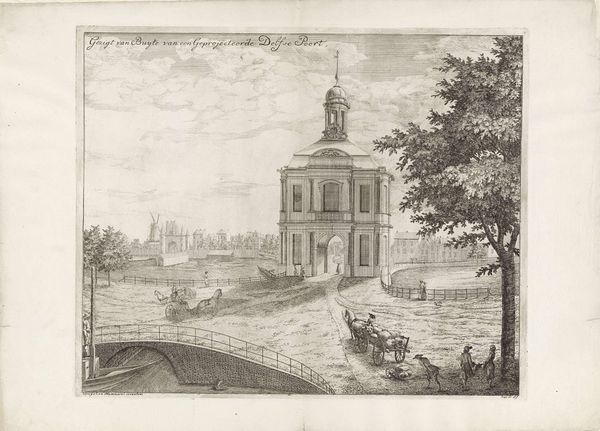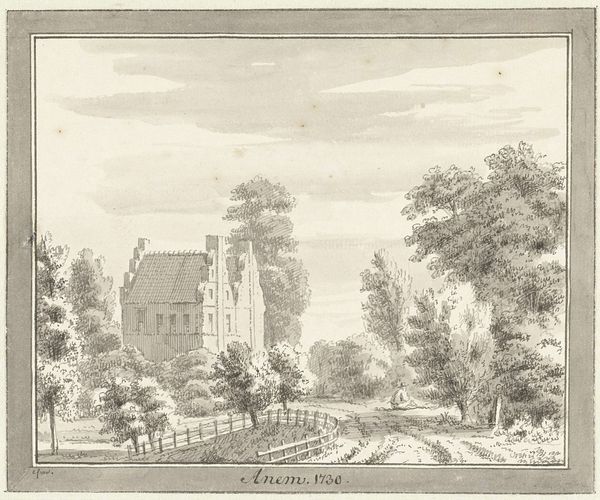
Dimensions: height 176 mm, width 248 mm
Copyright: Rijks Museum: Open Domain
Carel Frederik Bendorp created this cityscape of the Lutheran Church in Rotterdam using etching, a printmaking technique with a long history. Here, a metal plate, likely copper, would have been coated with a waxy, acid-resistant substance. The artist then scratched an image into this coating, exposing the metal. Immersed in acid, the exposed lines are eaten away, creating grooves. Ink is applied, filling these grooves, and the plate is pressed onto paper, transferring the image. The fine lines and detailed rendering of the architecture, the bridge, and the trees demonstrate Bendorp’s mastery of the etching process. Printmaking was a key technology in the 18th century, allowing for the mass production and distribution of images. This cityscape, therefore, speaks to a growing culture of documentation, dissemination, and even tourism, where views of cities could be collected and shared, shaping perceptions and solidifying urban identities. It shows that art is tied to labor, politics, and consumption.
Comments
No comments
Be the first to comment and join the conversation on the ultimate creative platform.
